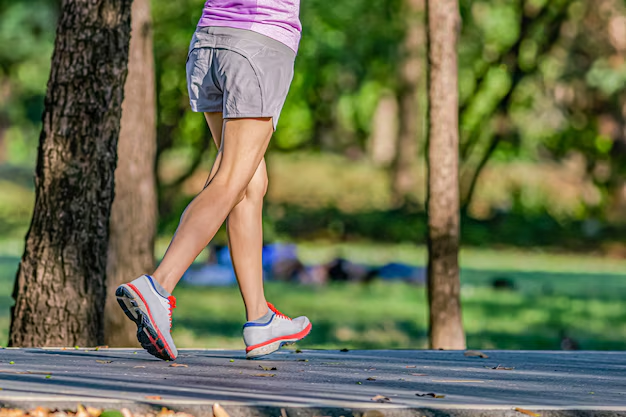Is Walking a Good Strategy for Managing Osteoporosis?
Osteoporosis is often called the "silent disease" because it progresses without symptoms until a fracture occurs. Millions worldwide are affected by this condition, which weakens bones and increases the risk of sudden and unexpected fractures. Many patients wonder about practical ways to manage osteoporosis, and a common question is: Is walking good for osteoporosis? Let's explore how walking plays a role in bone health, and how it can be implemented as part of a daily routine to help mitigate the risks associated with osteoporosis.
Understanding Osteoporosis
Osteoporosis is characterized by low bone mass and deterioration of bone tissue, leading to increased fracture risk. It is crucial to recognize the risk factors, which include gender, age, family history, and lifestyle choices. More common in women, particularly post-menopausal women, osteoporosis begins slowly and can develop over years, often without signs until a fracture occurs.
How Walking Affects Bone Health
The Science Behind Walking and Bone Density
Weight-bearing exercises, such as walking, force your body to work against gravity, prompting bones to adapt by building more cells and becoming denser. Walking, specifically, is a natural and low-impact activity that can help maintain or even increase bone density. Unlike high-impact sports, it places less stress on joints while still providing adequate resistance necessary to stimulate bone-building cells.
Benefits of Walking for Individuals with Osteoporosis
- Improved Balance and Coordination: Regular walking enhances balance, reducing the risk of falls and fractures.
- Increased Muscle Strength: Stronger muscles support and protect bones.
- Enhanced Flexibility: Walking helps maintain joint function and flexibility, which is vital for bone health.
Starting a Walking Routine
Safety Tips and Guidelines
Before initiating any exercise program, it’s essential to consider safety guidelines:
- Consult Healthcare Providers: Seek advice to ensure walking is appropriate for your condition.
- Choose Supportive Footwear: Wear shoes that provide good support to minimize injury risk.
- Warm-Up and Cool Down: Begin with light stretching to prepare your muscles for walking.
- Use Proper Technique: Maintain a good posture to maximize benefits and prevent strain.
- Start Slow and Gradually Increase Duration: Begin with short distances and low intensity, then progressively increase time and pace.
Combining Walking With Other Activities
Integrating Strength Training
Incorporating strength training exercises helps build muscle mass, which supports bones and enhances overall stability. Activities can include light weightlifting or resistance band workouts, focusing on all major muscle groups.
Include Flexibility and Balance Exercises
Flexibility and balance activities, such as yoga or tai chi, complement a walking regimen by reducing fall risk through improved body awareness and muscle control.
Lifestyle Considerations for Better Bone Health
Nutrition and Bone Health
Optimal bone health is not solely exercise-dependent; nutrition plays a pivotal role. Ensure a diet rich in:
- Calcium: Necessary for bone strength; found in dairy products, leafy greens, and fortified foods.
- Vitamin D: Aids in calcium absorption; sourced through sun exposure and foods like fatty fish and fortified milk.
- Protein: Essential for muscle mass, should be incorporated into every meal.
- Magnesium and Vitamin K: Key nutrients in bone formation and maintenance.
Lifestyle Habits
- Quit Smoking and Limit Alcohol: Smoking and excessive alcohol weaken bone structure.
- Monitor Bone Health Regularly: Schedule bone density tests to monitor your bone health periodically.
Motivational Strategies to Keep Walking
Set Realistic Goals
Establishing realistic, achievable goals enhances motivation and adherence to a walking routine. Begin with manageable targets and gradually increase as your endurance builds.
Partner Up
Walking with a friend or group creates accountability and makes the experience more enjoyable, increasing the likelihood of maintaining consistency.
Track Progress
Use a pedometer or fitness tracker to monitor your steps and progress, which can serve as a visual indicator of improvement and motivation to push further.
Different Types of Walking Exercises
- Nordic Walking: Involves using poles to engage upper body muscles, offering a full-body workout.
- Interval Walking: Alternating periods of fast and slow walking to increase cardiovascular benefits.
- Walking Uphill or on Uneven Terrain: Increases resistance and challenges balance.
Key Takeaways
While osteoporosis can be a daunting diagnosis, incorporating regular physical activity like walking into your routine can have numerous benefits in managing bone health. Walking is a weight-bearing exercise that not only helps in maintaining bone density but also improves balance, muscle strength, and flexibility. Coupled with a balanced diet and healthy lifestyle habits, walking can be a pivotal element in the multifaceted approach to managing osteoporosis.
To optimize your walking routine, always prioritize safety, incorporate various related exercises, and remain consistent. Evaluating your progress and adapting as necessary will ensure you maximize the benefits, helping you lead an active and healthful life.
Practical Tips for Walking and Bone Health 🦴🚶♂️
- Consult a Healthcare Provider: Always verify if walking is suitable for your specific condition.
- Set Achievable Goals: Start small and build up your walking routine gradually.
- Stay Consistent: Consistency is key; walk regularly to reap maximum benefits.
- Monitor Your Progress: Use tools to track and motivate continued improvement.
- Combine Exercises: Integrate strength training and flexibility workouts for overall health.
- Adopt a Nutrient-rich Diet: Focus on calcium, vitamin D, and protein intake for bone health.
- Create a Social Environment: Walk with friends or groups for added encouragement and enjoyment.
These tips are intended to empower and guide individuals on the path to better bone health through regular walking and lifestyle adjustments.

Related Articles
- a Nurse Is Caring For a Client Who Has Osteoporosis.
- a Percutaneous Is Performed To Treat Osteoporosis Related Compression Fractures
- Can Alcohol Cause Osteoporosis
- Can I Do Pilates If I Have Osteoporosis
- Can I Reverse Osteoporosis
- Can Men Get Osteoporosis
- Can Osteoporosis Affect Teeth
- Can Osteoporosis Be Cured
- Can Osteoporosis Be Painful
- Can Osteoporosis Be Reversed